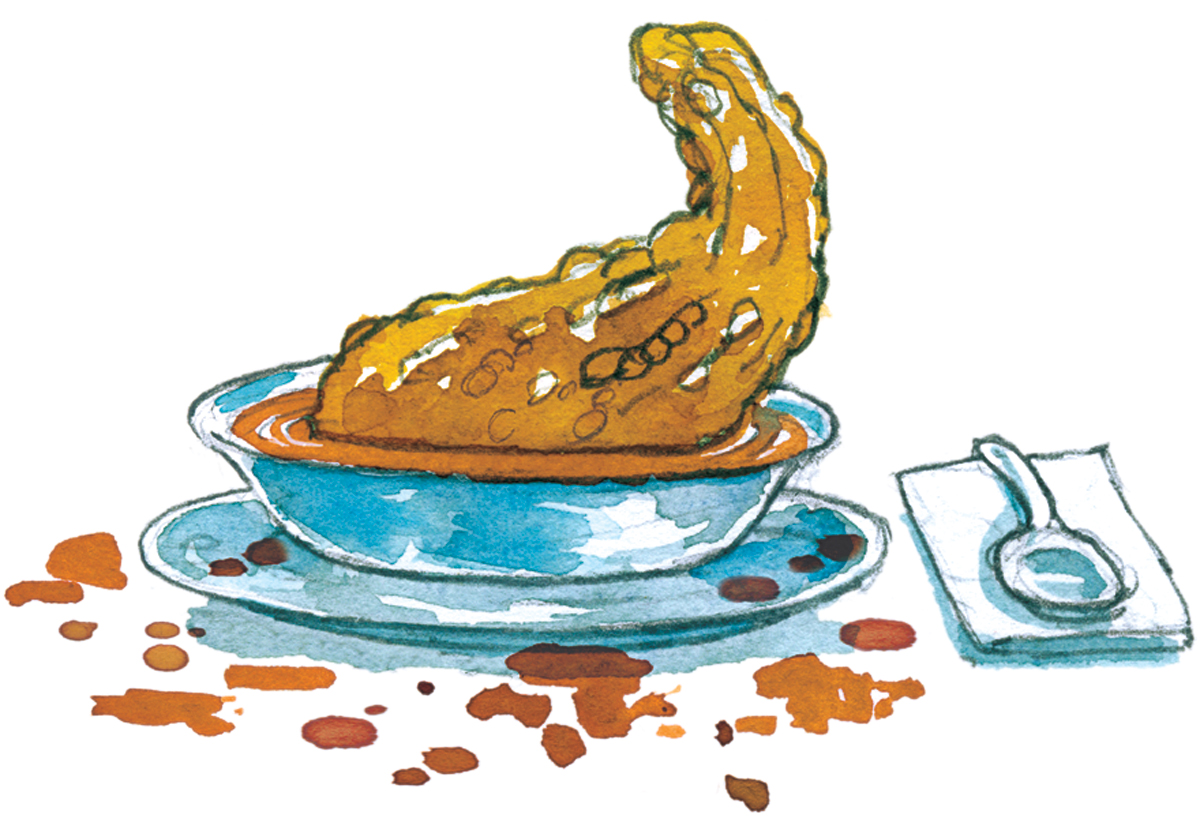Rut’s Happening: Farm-to-Table Gets Boring

Illustration by Steven Stankiewicz
Okay, I’ll be the first to give locavorism props. It’s taught us to favor smaller producers, to consider the carbon impact of jet-setting foodstuffs, to embrace peaches picked at the height of summer. But as farm-to-table morphs from discrete restaurant category to baseline practice, I’ve wondered if the pendulum has swung too far. Because frankly, I’m starting to get bored.
I love peak-season tomatoes. Which is different from saying I love eating only tomatoes, for every meal, during September. See the nuance? And now that it’s fall, you can bet your butternut bisque that pumpkins, winter squash, and the rest of the cucurbitaceous clan will find themselves shoehorned onto every menu in town: “Tonight, Chef’s doing a pumpkin-stuffed turban squash topped with local pepitas and a house-carved jack-o’-lantern gastrique.” There’s nothing wrong with submitting a vegetable to the death-by-chocolate approach—except, that is, when every eatery on the block is doing it, too. By midmonth, mark my words, I’ll be begging for one tiny hit of Peruvian asparagus, as Cinderella’s Coach Syndrome sets in.
It was once a badge of honor to serve an exotic morsel you couldn’t simply pluck from a farmstand bin. Now treating any ingredient as “perennial” has become a badge of shame—the foodie equivalent of wearing white after Labor Day. Sometimes this is smart. Winter peach pie? Culinary foul. But it’s a pity to expunge perfectly lovely items for appearances’ sake—not every asparagus plate owes its magic to the ethereal complexities of Hadley terroir.
Nor should it, because thanks to specialty markets like Siena Farms, I have access to much of the same produce chefs do. In fact, chances are I spent all day at home shoving heirloom gourds into Pyrex for some looming holiday feast. When I dine out, I’m looking for more. Got anything else back there?


